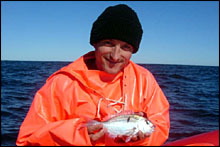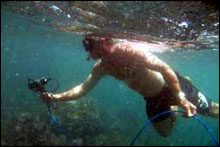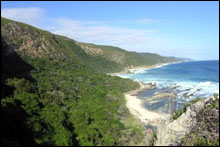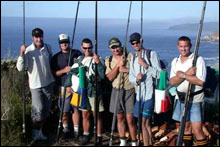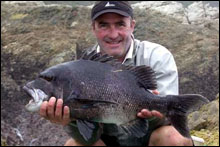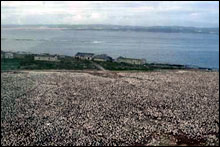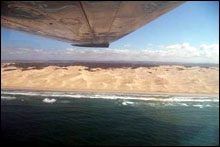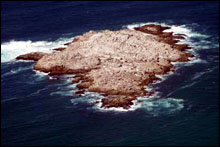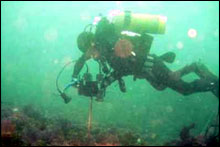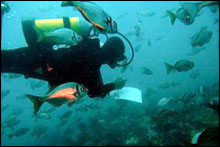Monitoring our oceans to detect early-warning signals of climate change
- By Dr Albrecht Götz, SAEON
Elwandle Node
The SAEON Elwandle Node is involved in two ongoing monitoring projects of inshore marine resources at Woody Cape Nature Reserve and the Tsitsikamma National Park.
More than 13 000 hours of standardized shore-angling at these two target sites yielded a data set spanning 16 years. Valuable insights into the temporal variability of marine resources were gained from this data during analysis, and publications are currently in progress. Since 2007, observation scientists have been monitoring the intertidal environment of both target sites by means of digital photography quadrates and tidal pool sampling using rotenone, a broad-spectrum piscicide.
There are two projects that target the offshore environment. In Algoa Bay, in a project that started at the beginning of 2006, information is being collected around Bird Island and the St Croix Island group. A new offshore monitoring site was established in the Tsitsikamma National Park in December 2006. Here, an array of permanent automated systems, monitoring climate and oceanographic conditions, is being maintained.
A variety of survey types are conducted biannually at both target sites using standardized methods. Digital underwater photography quadrates and specimen collections are carried out during SCUBA surveys to build up a photographic inventory of invertebrates and determine inter-annual changes in their abundance. Due to an inherently high variability between observers, demersal fish (fish that dwell near the bottom of the ocean) are identified and counted according to strict protocols using SCUBA. To further eliminate bias, digital underwater video sampling is conducted at the same sites. Footage can be stored and analyzed comparatively in order to establish a long-term benchmark and to put observer bias into perspective.
In addition, controlled angling surveys are conducted from ski-boats. These surveys aim to back up long-term trends identified during underwater visual census and allow researchers to gain valuable insights into the state and levels of vulnerability of reef fish species to exploitation by the recreational and commercial fishery sectors.
Collecting the necessary biological data in large Marine Protected Areas will enable oceanographic researchers to link possible changes in biota (plant and animal life) with long-term climate change without complicating any causal relationships by superimposed anthropogenic impacts (exploitation and habitat destruction).
Such information is necessary for early-warning systems which can reduce the social and economic costs caused by changes in marine resources.
|
About Dr Albrecht Götz
Dr Albrecht Götz is a post-doctoral fellow who currently leads the SAEON Elwandle Node's marine park monitoring.
Dr Götz gained extensive experience in North Sea ecology (while studying at a German University), in the Caribbean (one year marine field research in Trinidad for his MSc), and locally, where he has spent four years studying the marine ecosystem in the Goukamma Marine Protected Area.
He has published scientific papers and presented at local and international Marine Science Symposia. With completion of his PhD in South Africa, he has produced ground-breaking research in that he was the first to unequivocally demonstrate the broad ecological impacts of linefishing on the marine offshore environment.
Since completion of his PhD he has been involved in a number of long-term monitoring programmes at Woody Cape, Tsitsikamma National Park and Algoa Bay in collaboration with the Department of Ichthyology and Fisheries Science, EnviroFish Africa, the South African National Parks (SANParks) and the South African Institute for Aquatic Biodiversity (SAIAB).


